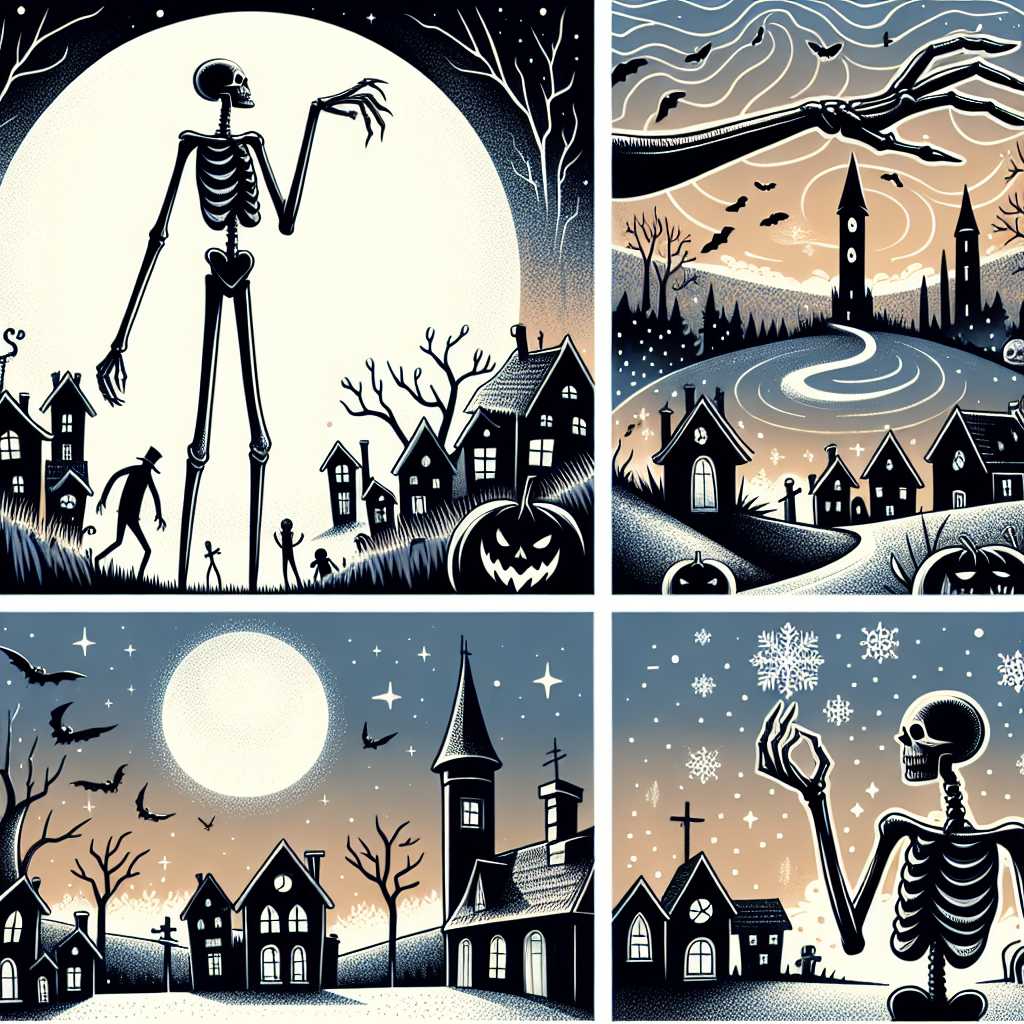The Enduring Appeal of “The Nightmare Before Christmas”
“The Nightmare Before Christmas” stands as a timeless amalgamation of Halloween spookiness and Christmas charm, having captivated audiences with its unique stop-motion animation, memorable musical score, and a story that speaks to both the child and the romantic in all of us. Directed by Henry Selick and produced and conceived by Tim Burton, this movie has transcended its initial 1993 release to become a cult classic celebrated throughout both the Halloween and Christmas seasons. Let’s delve into how “The Nightmare Before Christmas” has become a fixture in pop culture and continues to enchant new generations with its tale of Jack Skellington’s inadvertently chaotic quest to bring Christmas to Halloween Town.
Concept and Creation
The brainchild of Tim Burton, “The Nightmare Before Christmas” started out as a poem written while Burton was a Disney animator in the early 1980s. The poem drew on influences like the television specials “Rudolph the Red-Nosed Reindeer” and “How the Grinch Stole Christmas!” as well as the classic poem “A Visit from St. Nicholas.” Burton’s darkly whimsical style, established in feature films such as “Edward Scissorhands” and “Beetlejuice,” carried over into this project. Given its unconventional approach to animation and narrative, producing the film was a considerable risk for studios at the time.
Stop-Motion Animation Wonders
“Nightmare Before Christmas” is particularly noted for its use of stop-motion animation, a painstaking process where objects (in this case, character models) are physically manipulated in small increments between individually photographed frames, creating the illusion of movement when the sequence of frames is played as a continuous sequence. Its visual style is characterized by gothic aesthetics, creative character designs, and detailed sets that contribute substantially to the movie’s unique feel. The visceral qualities of real sets and figures contrast strikingly against the more sanitized look of traditional cell animation.
Musical Mastery by Danny Elfman
Another enchanting element is the movie’s music. Composed by Danny Elfman, who frequently collaborates with Burton, the score and songs capture the essence of both Halloween ghoulishness and Yuletide cheer. Elfman’s bold tunes accentuate every moment, from Jack Skellington’s longing for something more in “Jack’s Lament,” to his giddy discovery of Christmas Town in “What’s This?” The movie’s songs serve not merely as catchy interludes but as narrative engines that advance the plot and develop character.
Character Devotion: From Jack Skellington to Sally
At the heart of “Nightmare Before Christmas” are the characters who have ingrained themselves in popular conscience. The ‘Pumpkin King’ Jack Skellington is instantly recognizable with his pinstripe suit and skeletal grin, representing much more than just a figurehead of Halloween Town; he mirrors our own questioning of life’s purpose. Meanwhile, Sally, a ragdoll brought to life with stitches and filled with longing for freedom and love, provides an emotional grounding with her innate kindness
Undying Pop Culture Influence
Since its release, “The Nightmare Before Christmas” has established itself as an annual holiday season must-watch. Merchandise featuring Jack Skellington’s likeness is omnipresent during Halloween and Christmas seasons alike. Its themes of self-discovery, pushing boundaries, and longing resonate universally, which has helped cultivate a deeply faithful fanbase that celebrates its artistry.
The Nightmare Before Christmas’ Legacy
Boosted by its critical acclaim and growing popularity which led to re-releases over subsequent Halloweens and Christmases, this film has become not only financially successful but profoundly influential in multiple areas. It reignited interest in stop-motion animation—encouraging productions like “Corpse Bride,” “Coraline,” and “Frankenweenie.” It also contributed to a rise in alternative holiday storytelling, making space for stories beyond traditional holiday norms.
